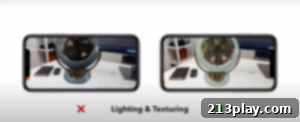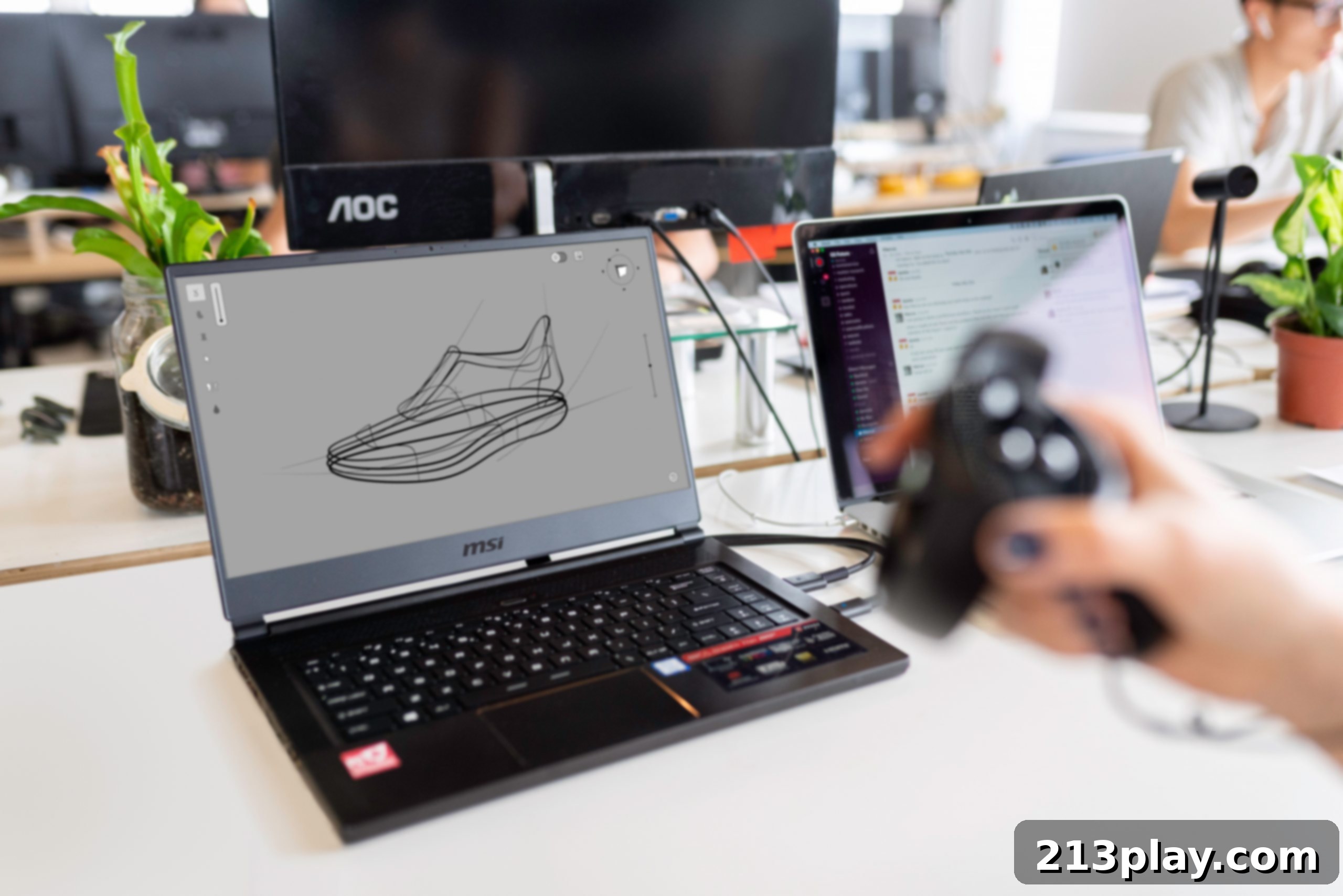Virtual Reality vs. Augmented Reality: A Comprehensive Guide to Immersive Technologies
Table of Contents
Welcome to our deep dive into two of the most transformative technologies of our era: Virtual Reality (VR) and Augmented Reality (AR). As we step into a new year, the discourse around immersive experiences continues to evolve, shaping industries from entertainment and education to healthcare and engineering. While both VR and AR offer innovative ways to interact with digital content, they achieve this through fundamentally different approaches to blending the real and virtual worlds. Understanding their distinctions, applications, and characteristics is key to appreciating their individual potential and collective impact. Let’s explore these fascinating technologies and their growing influence on our lives.
VR vs AR
At their core, Virtual Reality (VR) and Augmented Reality (AR) represent distinct philosophies for merging digital information with human perception. VR is about creating an entirely immersive, simulated environment that transports users away from their physical surroundings. When you don a VR headset, you are fully enveloped in a digital world, completely cut off from real-world sights and sounds. This complete immersion is its defining feature, making you feel present within a computer-generated space, whether it’s a fantastical game world, a virtual meeting room, or a simulated training scenario.
In contrast, Augmented Reality (AR) enhances or “augments” the real world by overlaying digital information onto a live view of physical reality. Instead of replacing your environment, AR adds to it. This means you still see and interact with your actual surroundings, but with virtual elements superimposed on top. Think of it as a transparent layer of digital content that interacts with your real-world perception. This could be anything from virtual furniture placed in your living room through a smartphone camera, to interactive directions displayed on a car windshield, or even virtual characters appearing in your park. The key difference lies in VR’s aim to replace reality with a digital one, while AR seeks to enrich reality by adding digital elements to it.
Virtual Reality Application
Virtual Reality has found its most recognized home in the world of video games, where its ability to create fully immersive experiences truly shines. Titles like “No Man’s Sky VR” on PlayStation VR or the rhythm-action game “Beat Saber” exemplify how VR can transform gaming, allowing players to feel physically present within a game’s universe. This immediate sense of presence, where players can look around and interact with virtual objects as if they were real, takes engagement to an unprecedented level.

Beyond entertainment, VR’s applications are rapidly expanding. In education, VR offers virtual field trips to historical sites or distant planets, enabling students to learn through experiential engagement. For medical training, surgeons can practice complex procedures in a risk-free virtual operating room, improving skills and confidence. The military utilizes VR for flight simulations and tactical training, replicating high-stakes scenarios for pilots and soldiers. Architects and designers use VR to visualize and walk through their creations before they are built, allowing for early adjustments and enhanced client presentations. Furthermore, VR is proving invaluable in therapy, particularly for treating phobias like acrophobia (fear of heights) or PTSD, by gradually exposing patients to controlled virtual environments. These diverse applications highlight VR’s power to simulate realities for training, learning, and experience.
Virtual Reality Characteristics
While modern VR technology appears revolutionary, the underlying concepts date back decades. A significant precursor was the Sensorama, invented in 1962 by cinematographer Morton Heilig. This pioneering device aimed to deliver a multi-sensory virtual experience. The Sensorama combined a stereoscopic color display for 3D visuals, fans for air currents, scent producers for smells, a stereo sound system, and a vibrating chair. Its goal was to immerse the user in a simulated environment, such as riding a motorbike through the streets of New York City. The vibrating seat mimicked the bike’s engine, fans generated the wind, scent emitters released city smells, and the visuals and sounds completed the illusion.

Today’s Virtual Reality systems have evolved dramatically but retain the core characteristic of creating a deep sense of presence and immersion. Key characteristics include:
- Head-Mounted Displays (HMDs): These devices enclose the user’s field of vision, providing a stereoscopic view of the virtual world, completely blocking out the real environment. Advanced HMDs offer high resolution, wide fields of view, and high refresh rates to minimize motion sickness and enhance realism.
- Positional Tracking: Essential for realism, positional tracking allows the system to monitor the user’s head and body movements in 3D space. This means as you walk or lean, your perspective in the virtual world updates accordingly, enhancing the feeling of being physically present.
- Interactive Controllers: Handheld controllers or specialized gloves provide intuitive ways to interact with the virtual environment, mimicking natural hand movements for picking up objects, gesturing, or operating virtual tools. Haptic feedback in these controllers can simulate touch and resistance, further deepening immersion.
- Spatial Audio: Realistic 3D audio cues enhance immersion by making sounds appear to come from specific directions and distances within the virtual space, adding another layer of sensory feedback.
While the Sensorama was ahead of its time, modern VR builds upon its multi-sensory approach, leveraging powerful computing, advanced display technology, and sophisticated tracking systems to deliver truly convincing and engaging virtual experiences.
Augmented Reality Application
Augmented Reality, or AR, seamlessly blends digital content with the real world, enriching our perception of physical reality rather than replacing it. One of the most intuitive applications of AR is in design and remodeling software. Imagine wanting to redecorate your living room: with AR, you can point your smartphone or tablet camera at your wall and instantly preview different paint colors, wallpaper patterns, or even virtual furniture pieces placed realistically within your actual space. This allows for informed decisions before any physical changes are made, saving time and resources.

Another groundbreaking application that brought AR into the mainstream consciousness was the game “Pokemon Go,” released by Nintendo in July 2016. This game allowed players to discover and “catch” virtual Pokemon superimposed onto their real-world surroundings via their smartphone cameras. Its immense popularity demonstrated the potential of AR for engaging millions in a novel way, turning everyday locations into interactive playgrounds. While Nintendo had previously explored immersive tech with the Virtual Boy, which faced commercial failure due to technical limitations and lack of user comfort, Pokemon Go illustrated AR’s accessibility and appeal through widely available devices.
AR’s utility extends far beyond gaming and home decor. In retail, “try-on” apps allow customers to virtually sample clothing, accessories, or makeup before purchase. Industrial applications include remote assistance for technicians, where experts can guide on-site workers through complex repairs by drawing digital annotations directly onto their real-world view. In healthcare, AR can overlay patient data or anatomical models onto a surgeon’s view during operations. Even in education, AR can bring textbooks to life, offering interactive 3D models and simulations that respond to real-world objects. These examples underscore AR’s versatility in enhancing practical tasks, entertainment, and learning experiences by bridging the digital and physical realms.
Augmented Reality Characteristics
Augmented Reality fundamentally differs from Virtual Reality in its core characteristics and operational approach. While VR aims to completely immerse users in a fabricated digital world, AR is designed to integrate digital information seamlessly into the user’s perception of the real world. This crucial distinction makes AR exceptionally versatile and applicable across a multitude of industries, enhancing existing environments rather than creating new ones.

The defining characteristics of Augmented Reality include:
- Real-time Interaction: AR applications provide interactive digital content that responds to the user’s real-world environment and movements in real time. This means digital objects can be manipulated or moved as if they truly exist in the physical space.
- Overlay of Digital Information: AR systems superimpose virtual images, text, or 3D models onto a live view of the physical world. This can be achieved through smartphone cameras, smart glasses, or specialized AR headsets, allowing users to see both reality and its digital enhancements simultaneously.
- Contextual Awareness: Advanced AR relies heavily on sophisticated computer vision algorithms and sensors to understand the user’s physical environment. This includes “mapping the area” in the visual field of the camera lens, precisely accounting for factors like object height, depth, surface textures, and even the ambient lighting conditions of the room. This spatial awareness allows virtual items to be anchored realistically to surfaces, appearing to sit on a desk or hang on a wall, rather than floating disconnectedly.
- Sensory Integration: While primarily visual, AR can also integrate auditory cues and haptic feedback to further blend the digital and physical. For instance, a virtual button might make a clicking sound when pressed, or a digital object could generate a subtle vibration when “touched” through an AR interface.
This capability to interpret and interact with the physical world makes AR an incredibly powerful tool for adding new, dynamic elements to our daily experiences, transforming how we work, learn, and play without disconnecting us from our immediate surroundings.
Interaction With Physical Reality
Our interaction with physical reality often comes with inherent limitations. We are bound by geographical presence to perform tasks, and direct physical contact is usually required to affect objects. These constraints can create barriers in various aspects of life, from learning and work to personal well-being. Both Virtual Reality and Augmented Reality offer powerful solutions to overcome these boundaries, albeit through different mechanisms.
Virtual Reality, by creating fully immersive simulated environments, allows individuals to transcend physical limitations entirely. A person suffering from acrophobia (the fear of heights), for example, can undergo exposure therapy in a controlled VR setting, gradually confronting their fear in a safe, virtual skyscraper. This therapeutic application demonstrates VR’s ability to create experiences that are otherwise impossible or impractical in the real world, leading to profound psychological and behavioral changes.

Augmented Reality, on the other hand, enhances our existing physical reality, making it more informative and interactive. For business executives, AR can revolutionize workflow management by displaying crucial data, charts, and schedules directly onto office walls or desks, turning any physical surface into an interactive dashboard. This allows for immediate access to information within a 360-degree view, fostering better decision-making and collaboration without cluttering the physical space.
In the broader scope of interaction with physical reality, AR is often considered more versatile due to its non-intrusive nature. It complements our everyday lives without requiring us to disconnect. Both VR and AR, however, hold immense potential to profoundly improve our lives. Imagine data visualization becoming an interactive 3D experience, making complex information instantly understandable. Surgeries could be guided by real-time AR overlays of patient vitals and anatomical structures, or even performed remotely through advanced VR telepresence. Education could transform into deeply engaging, experiential learning, allowing children to explore historical events or scientific phenomena directly from the comfort of their homes.
These advancements necessitate the continuous evolution of both VR and AR, leading to the emergence of technologies like Mixed Reality (MR) and Extended Reality (XR). These concepts represent a continuum where digital and physical realities are increasingly intertwined, promising even more seamless and powerful immersive experiences in the future. To delve deeper into these fascinating developments and explore the distinctions between MR and XR, be sure to tune in next week for our dedicated MR vs XR blog post. Until then, we hope you have a wonderful day exploring the boundless possibilities of immersive technology.
